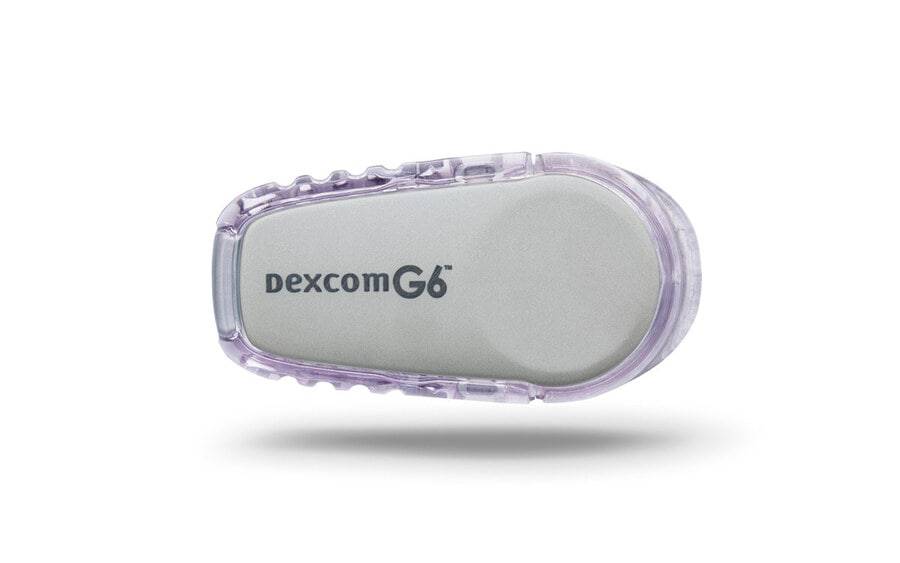Scripps Whittier Receives $3.1 Million NIH Grant To Study Continuous Glucose Monitoring in the Hospital
Research builds on earlier study and CGM use in Scripps hospitals during COVID-19 pandemic

Research builds on earlier study and CGM use in Scripps hospitals during COVID-19 pandemic
The National Institutes of Health have awarded a $3.1 million grant to the Scripps Whittier Diabetes Institute to study the use of wireless continuous glucose monitoring (CGM) devices among hospitalized patients with type 2 diabetes in hope of better controlling their blood sugar during their admission.
The new study will build on earlier research conducted by Scripps Whittier and on the subsequent use of CGM devices among patients with diabetes in Scripps Health hospitals during the COVID-19 pandemic. Early in the public health crisis, the Food and Drug Administration cleared the way for hospitals to use the devices to reduce the number of times a nurse must go into a patient’s room for more conventional finger pricks. Without CGM, nurses typically enter a patient’s room four to six times a day to check blood glucose levels.
“Digital solutions have revolutionized banking, air travel, stock markets and more,” said Athena Philis-Tsimikas, MD, a Scripps Clinic endocrinologist, corporate vice president of Scripps Whittier, and co-principal investigator on the study. “Finding the right and safe position for this type of technology in the health care setting is critically important.”
CGM devices have been approved for outpatient use since 1999, but their use in the hospital setting remains limited to research efforts and the special conditions allowed during the pandemic.
It is essential to manage blood sugar levels properly and continuously in people with diabetes to ensure their long-term health. When blood sugar is too high (a common effect of diabetes known as hyperglycemia) for too long a period, it can cause serious problems such as heart disease or heart attack, stroke, and damage to the kidneys, nerves and eyes.
Moving CGM technology permanently into the acute-care setting could be significant because this would equip care teams with more information – 288 measurements a day – to guide treatment decisions than traditional tracking methods provide. And diabetes is a common condition, affecting one in three hospitalized adults in California.
Uncontrolled blood sugar in the hospital contributes to hospital-acquired infection, neurological and cardiac complications, mortality, longer lengths of stay, readmissions and higher health care costs. Studies also have shown that COVID-19 patients with diabetes and poorly controlled blood glucose had poorer outcomes than those with well-controlled blood glucose.
Meanwhile, conditions in the hospital such as stress, unpredictable timing of tests and procedures, new medications, and the medical staff’s focus on the patient’s primary reason for hospitalization, can make glucose management difficult in this environment.
“Our new study gives us the opportunity to test CGM in the acute-care setting under rigorous, gold-standard research conditions,” said director of the diabetes service line at Scripps and study co-principal investigator, Addie Fortmann, Ph.D. “The data we gather will greatly expand our understanding of the safety, effectiveness and value of using this technology to improve the care and outcomes of hospitalized patients with diabetes.”
Study will be largest conducted in hospital setting
In what will be the largest study of its kind to date, Scripps Whittier researchers plan to enroll 554 patients with type 2 diabetes who are admitted into Scripps Mercy Hospital Chula Vista over the three-and-a-half-year recruitment period of the randomized controlled trial.
All study participants will be fitted with a CGM device. However, only data from one half of the participants will be continuously monitored by nurses using real-time dashboards on iPads and computers, allowing them to track blood sugar trends and respond to urgent changes with insulin or other treatments.
The other half of the participants will undergo the periodic finger pricks and metering that is part of the current standard of care for hospitalized patients with diabetes. Data from CGM devices worn by the second group will be used only for overall evaluation.
Researchers hope to start enrolling patients in the study in early 2022.
In the earlier clinical trial, Scripps Whittier researchers recruited 110 adult patients with type 2 diabetes who were admitted to Scripps Mercy Hospital San Diego over a four-year period. Reporting in the medical journal Diabetes Care last August, the researchers said patients wearing CGM devices saw better control of their blood sugar levels, and time spent in hyperglycemia was 11% lower than in patients who received the standard care finger pricks.
Under the special allowance by the FDA during the pandemic, Scripps has outfitted about 500 additional patients – a third of whom were infected with the new coronavirus – with CGM devices, benefitting both patients and staff members.
“Patients accustomed to using these devices outside the hospital are relieved to use one once they are admitted,” Fortmann said. “For nurses, being able to access glucose data remotely without entering a patient’s room saves personal protective equipment, lowers the risk of exposure to infection, saves time and reduces burden for care team members who have been heavily taxed by pandemic patient volumes.”
Learn more about Scripps Health, a nonprofit integrated health system in San Diego, Calif.
Media Contact
- Keith Darce
- 858-678-7121
- darce.keith@scrippshealth.org